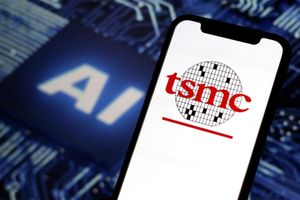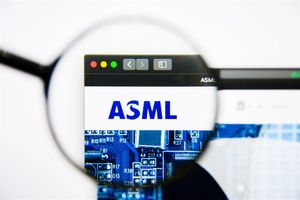
The global technology landscape is undergoing a monumental transformation, driven by an unprecedented push for reindustrialization and the establishment of secure, resilient supply chains in the semiconductor industry. This strategic pivot, fueled by recent geopolitical tensions, economic vulnerabilities, and the insatiable demand for advanced computing power, particularly for artificial intelligence (AI), marks a decisive departure from decades of hyper-specialized global manufacturing. Nations worldwide are now channeling massive investments into domestic chip production and research, aiming to safeguard their technological sovereignty and ensure a stable foundation for future innovation, especially in the burgeoning field of AI.
This sweeping initiative is not merely about manufacturing chips; it's about fundamentally reshaping the future of technology and national security. The era of just-in-time, globally distributed semiconductor production, while efficient, proved fragile in the face of unforeseen disruptions. As AI continues its exponential growth, demanding ever more sophisticated and reliable silicon, the imperative to secure these vital components has become a top priority, influencing everything from national budgets to international trade agreements. The implications for AI companies, from burgeoning startups to established tech giants, are profound, as the very hardware underpinning their innovations is being re-evaluated and rebuilt from the ground up.
The Dawn of Distributed Manufacturing: A Technical Deep Dive into Supply Chain Resilience
The core of this reindustrialization effort lies in a multi-faceted approach to diversify and strengthen the semiconductor manufacturing ecosystem. Historically, advanced chip production became heavily concentrated in East Asia, particularly with Taiwan Semiconductor Manufacturing Company (TSMC) (NYSE: TSM) dominating the leading-edge foundry market. The new paradigm seeks to distribute this critical capability across multiple regions.
A key technical advancement enabling this shift is the emphasis on advanced packaging technologies and chiplet architectures. Instead of fabricating an entire complex system-on-chip (SoC) on a single, monolithic die—a process that is incredibly expensive and yield-sensitive at advanced nodes—chiplets allow different functional blocks (CPU, GPU, memory, I/O) to be manufactured on separate dies, often using different process nodes, and then integrated into a single package. This modular approach enhances design flexibility, improves yields, and potentially allows for different components of a single AI accelerator to be sourced from diverse fabs or even countries, reducing single points of failure. For instance, Intel (NASDAQ: INTC) has been a vocal proponent of chiplet technology with its Foveros and EMIB packaging, and the Universal Chiplet Interconnect Express (UCIe) consortium aims to standardize chiplet interconnects, fostering an open ecosystem. This differs significantly from previous monolithic designs by offering greater resilience through diversification and enabling cost-effective integration of heterogenous computing elements crucial for AI workloads.
Governments are playing a pivotal role through unprecedented financial incentives. The U.S. CHIPS and Science Act, enacted in August 2022, allocates approximately $52.7 billion to strengthen domestic semiconductor research, development, and manufacturing. This includes $39 billion in manufacturing subsidies and a 25% investment tax credit. Similarly, the European Chips Act, effective September 2023, aims to mobilize over €43 billion to double the EU's global market share in semiconductors to 20% by 2030, focusing on pilot production lines and "first-of-a-kind" integrated facilities. Japan, through its "Economic Security Promotion Act," is also heavily investing, partnering with companies like TSMC and Rapidus (a consortium of Japanese companies) to develop and produce advanced 2nm technology by 2027. These initiatives are not just about building new fabs; they encompass substantial investments in R&D, workforce development, and the entire supply chain, from materials to equipment. The initial reaction from the AI research community and industry experts is largely positive, recognizing the necessity of secure hardware for future AI progress, though concerns remain about the potential for increased costs and the complexities of establishing entirely new ecosystems.
Competitive Realignments: How the New Chip Order Impacts AI Titans and Startups
This global reindustrialization effort is poised to significantly realign the competitive landscape for AI companies, tech giants, and innovative startups. Companies with strong domestic manufacturing capabilities or those strategically partnering with newly established regional fabs stand to gain substantial advantages in terms of supply security and potentially faster access to cutting-edge chips.
NVIDIA (NASDAQ: NVDA), a leader in AI accelerators, relies heavily on external foundries like TSMC for its advanced GPUs. While TSMC is expanding globally, the push for regional fabs could incentivize NVIDIA and its competitors to diversify their manufacturing partners or even explore co-investment opportunities in new regional facilities to secure their supply. Similarly, Intel (NASDAQ: INTC), with its IDM 2.0 strategy and significant investments in U.S. and European fabs, is strategically positioned to benefit from government subsidies and the push for domestic production. Its foundry services (IFS) aim to attract external customers, including AI chip designers, offering a more localized manufacturing option.
For major tech giants like Google (NASDAQ: GOOGL), Amazon (NASDAQ: AMZN), and Microsoft (NASDAQ: MSFT), which are developing their own custom AI accelerators (e.g., Google's TPUs, Amazon's Trainium/Inferentia, Microsoft's Maia), secure and diversified supply chains are paramount. These companies will likely leverage the new regional manufacturing capacities to reduce their reliance on single geographic points of failure, ensuring the continuous development and deployment of their AI services. Startups in the AI hardware space, particularly those designing novel architectures for specific AI workloads, could find new opportunities through government-backed R&D initiatives and access to a broader range of foundry partners, fostering innovation and competition. However, they might also face increased costs associated with regional production compared to the economies of scale offered by highly concentrated global foundries. The competitive implications are clear: companies that adapt quickly to this new, more distributed manufacturing model, either through direct investment, strategic partnerships, or by leveraging new domestic foundries, will gain a significant strategic advantage in the race for AI dominance.
Beyond the Silicon: Wider Significance and Geopolitical Ripples
The push for semiconductor reindustrialization extends far beyond mere economic policy; it is a critical component of a broader geopolitical recalibration and a fundamental shift in the global technological landscape. This movement is a direct response to the vulnerabilities exposed by the COVID-19 pandemic and escalating tensions, particularly between the U.S. and China, regarding technological leadership and national security.
This initiative fits squarely into the broader trend of technological decoupling and the pursuit of technological sovereignty. Nations are realizing that control over critical technologies, especially semiconductors, is synonymous with national power and economic resilience. The concentration of advanced manufacturing in politically sensitive regions has been identified as a significant strategic risk. The impact of this shift is multi-faceted: it aims to reduce dependency on potentially adversarial nations, secure supply for defense and critical infrastructure, and foster domestic innovation ecosystems. However, this also carries potential concerns, including increased manufacturing costs, potential inefficiencies due to smaller scale regional fabs, and the risk of fragmenting global technological standards. Some critics argue that complete self-sufficiency is an unattainable and economically inefficient goal, advocating instead for "friend-shoring" or diversifying among trusted allies.
Comparisons to previous AI milestones highlight the foundational nature of this development. Just as breakthroughs in algorithms (e.g., deep learning), data availability, and computational power (e.g., GPUs) propelled AI into its current era, securing the underlying hardware supply chain is the next critical enabler. Without a stable and secure supply of advanced chips, the future trajectory of AI development could be severely hampered. This reindustrialization is not just about producing more chips; it's about building a more resilient and secure foundation for the next wave of AI innovation, ensuring that the infrastructure for future AI breakthroughs is robust against geopolitical shocks and supply disruptions.
The Road Ahead: Future Developments and Emerging Challenges
The future of semiconductor supply chains will be characterized by continued diversification, a deepening of regional ecosystems, and significant technological evolution. In the near term, we can expect to see the materialization of many announced fab projects, with new facilities in the U.S., Europe, and Japan coming online and scaling production. This will lead to a more geographically balanced distribution of manufacturing capacity, particularly for leading-edge nodes.
Long-term developments will likely include further integration of AI and automation into chip design and manufacturing. AI-powered tools will optimize everything from material science to fab operations, enhancing efficiency and reducing human error. The concept of digital twins for entire supply chains will become more prevalent, allowing for real-time monitoring, predictive analytics, and proactive crisis management. We can also anticipate a continued emphasis on specialized foundries catering to specific AI hardware needs, potentially fostering greater innovation in custom AI accelerators. Challenges remain, notably the acute global talent shortage in semiconductor engineering and manufacturing. Governments and industry must invest heavily in STEM education and workforce development to fill this gap. Moreover, maintaining economic viability for regional fabs, which may initially operate at higher costs than established mega-fabs, will require sustained government support and careful market balancing. Experts predict a future where supply chains are not just resilient but also highly intelligent, adaptable, and capable of dynamically responding to demand fluctuations and geopolitical shifts, ensuring that the exponential growth of AI is not bottlenecked by hardware availability.
Securing the Silicon Future: A New Era for AI Hardware
The global push for reindustrialization and secure semiconductor supply chains represents a pivotal moment in technological history, fundamentally reshaping the bedrock upon which the future of artificial intelligence will be built. The key takeaway is a paradigm shift from a purely efficiency-driven, globally concentrated manufacturing model to one prioritizing resilience, security, and regional self-sufficiency. This involves massive government investments, technological advancements like chiplet architectures, and a strategic realignment of major tech players.
This development's significance in AI history cannot be overstated. Just as the invention of the transistor and the subsequent miniaturization of silicon enabled the digital age, and the advent of powerful GPUs unlocked modern deep learning, the current re-evaluation of the semiconductor supply chain is setting the stage for the next era of AI. It ensures that the essential computational infrastructure for advanced machine learning, large language models, and future AI breakthroughs is robust, reliable, and insulated from geopolitical volatilities. The long-term impact will be a more diversified, secure, and potentially more innovative hardware ecosystem, albeit one that may come with higher initial costs and greater regional competition.
In the coming weeks and months, observers should watch for further announcements of government funding disbursements, progress on new fab constructions, and strategic partnerships between semiconductor manufacturers and AI companies. The successful navigation of this complex transition will determine not only the future of the semiconductor industry but also the pace and direction of AI innovation for decades to come.
This content is intended for informational purposes only and represents analysis of current AI developments.
TokenRing AI delivers enterprise-grade solutions for multi-agent AI workflow orchestration, AI-powered development tools, and seamless remote collaboration platforms.
For more information, visit https://www.tokenring.ai/.





